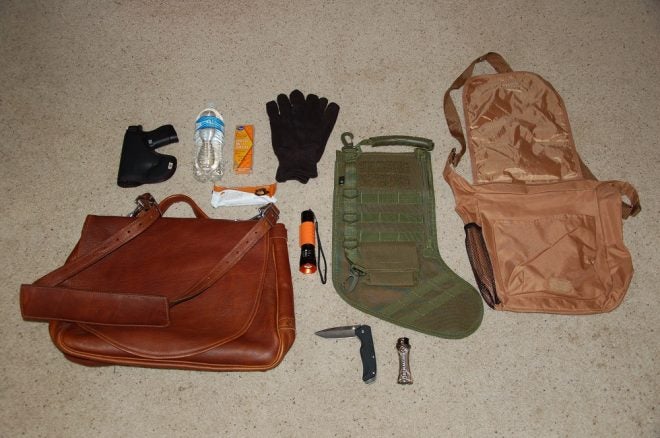Backpack Bug Out
Dr. John Woods 08.06.19

You’re stuck in the office five floors up when the power grid goes out. Rumors spread of a dirty bomb, but nobody really knows. Everything is dark except for the ambient light coming in some windows. You have to exit now. The traffic on the interstate slows to a crawl, then grinds to a halt. Smoke can be seen ahead from a major explosion when a tractor trailer truck overturns with a load of lethal chemical. A white cloud of vapor is blowing in the air. You have to escape on foot.
If you find yourself in such a situation, or any of endless SHTF scenarios, the first inclination is to flee the scene as quickly as possible. You’ll be seeking a safe zone away from any immediate life threat. Hopefully this is a short-term survival situation and nothing more, but you can’t always count on that. First, get away, then assess how you can get to safety.
Under such conditions, what will you need to get by for up to 48 hours on foot? You need to have everything you need to survive these critical hours in your pockets and on your back. A good, sturdy backpack fully loaded with appropriate gear and supplies is your lifeline to making a safe getaway. What would you pre-pack in a backpack to keep at your place of work or secured in your vehicle? Remember you may not be able to get to your car to retrieve it.
First, pick a pack that is durable, discreet, and comfortable to carry loaded. Know your own capacity to carry weight on your back, even for a short haul. You likely don’t need a pack for climbing the Himalayas or a 10-day Alaskan hunt, but you’ll need something able to support your needs for a couple days.
As you load your pack, make sure you can carry it or even lift it off the floor. Use common sense in packing just the bare most critical essentials. Mainly, we’re talking life support with some easy packable high energy foods, water, med kit, first aid, rain jacket, hat, gloves, knife, and flashlight. Self-defense has to be considered. If so inclined, pack or carry concealed a suitable firearm and a couple extra magazines. Have your cell phone and maybe a way to charge it.
Pick your gear and supplies carefully. Make some trial runs ahead of time. Exit your place of work and try to walk out several miles to pre-determined safe locations. Have plans in mind before it’s too late.